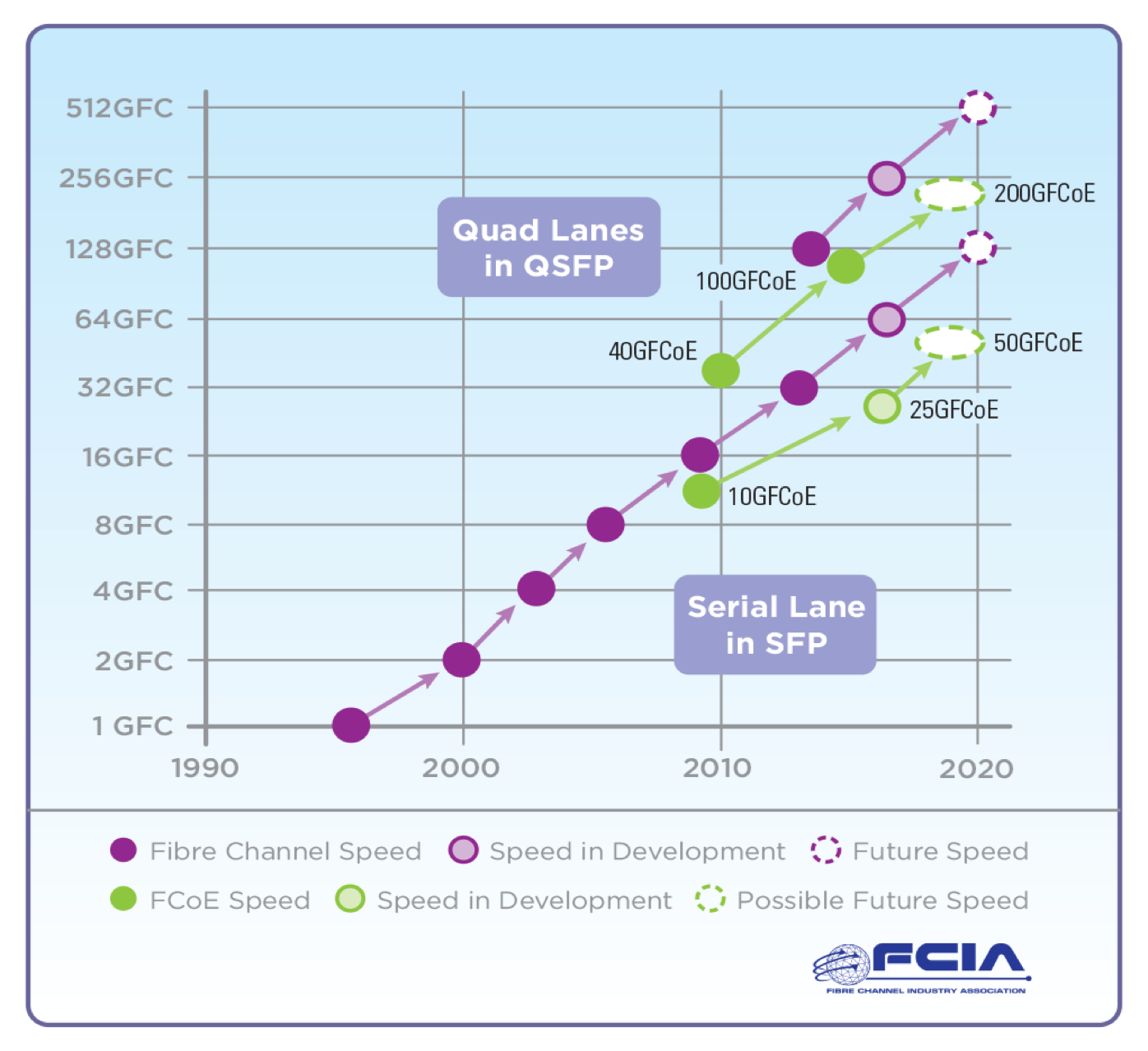A technology’s heart and soul is its roadmap
Author: Scott Kipp
Just like the term suggests, a roadmap shows the story of a technology. It is a guide to where it has been, where it is, where it is going and when it is going to get there. The more accurate the roadmap, the more valuable it is to its three primary audiences: the IT user base that deploys the technology, the development, manufacturing and distribution base that supplies the technology, and the industry standards bodies that develop standards for the technology.
When a roadmap is consistent, it provides a reliable guide for suppliers, manufacturers and distributors of products to plan their product development and release cycles based upon the features and timing of the technology migration. Some technology developments outlined in reliable roadmaps are required building blocks for product development. For example, lasers in optical modules need to be developed before the transceiver modules can be developed, eventually used in switches or host bus adapters. With a solid roadmap and standards, multiple companies can develop products in parallel that will eventually interoperate when they reach the market.
FCIA’s Roadmap Committee is the committee that produces the FCIA Speedmap in concert with the ANSI INCITS T11.2 Task Group, the standards body that defines Fibre Channel speeds. Since the FCIA collocates with T11 meetings, and its roadmap committee includes many of the key T11.2 standards engineers as well as key Fibre Channel supplier technical engineering and marketing experts, the resulting roadmap is the refined product of an intense iterative process that pinpoints highly attractive market propositions balanced with sound engineering feasibility.
The end results are an official FCIA Speedmap and Marketing Requirement Documents (MRDs )that become T11.2’s map of speeds and timelines. The MRDs define sets of features and benefits that are not only feasibly doable within the Speedmap timelines, but also results in actual products delivered in the prescribed timeframe that realize massive market success.
The Fibre Channel Industry Association’s roadmap has helped the industry see the future of Fibre Channel for over 15 years. Fibre Channel has always had a clear road ahead where the link speeds double every 3-4 years when the speeds can be cost-effectively doubled. Figure 1 shows the history of Fibre Channel speeds and the future speeds through 2020.
Figure 1: Fibre Channel Speeds
The Fibre Channel industry has embraced servers connecting to Fibre Channel storage via Ethernet with Fibre Channel over Ethernet (FCoE). FCoE uses the Ethernet physical layer and runs Fibre Channel frames and protocol over that physical layer of Ethernet.
Figure 1 shows how Fibre Channel has traditionally used serial speeds that use the venerable Small Form factor Pluggable (SFP) module. The sixth generation of Fibre Channel, known as Gen6 Fibre Channel, uses the SFP28 (an SFP that runs at 28Gb/s) for 32GFC as well as the Quad Small Form factor Pluggable (QSFP28) module for 128GFC. The T11 INCITS technical committee is defining new Fibre Channel speeds that will continue this tradition with 64GFC in an SFP and 256GFC in a QSFP.
The Fibre Channel roadmap doesn’t stop there. In Figure 2, the roadmap extends to Terabit Fibre Channel – that’s almost 1,000 Gigabits of data per second. Following the 1X/4X paradigm, Fibre Channel and Ethernet plan to double individual lane speeds repeatedly over the next decade. With Fibre Channel’s focus on storage in the data center, Fibre Channel will continue to standardize speeds before Ethernet. While Fibre Channel will double speeds from 28Gb/s to 56Gb/s in 2017, Ethernet plans to double 25Gb/s to 50Gb/s between 2018 and 2020.
The trend will continue with Fibre Channel lanes doubling to 112Gb/s and then 224Gb/s. When 4 lanes of these speeds are aggregated, the combined speeds will deliver almost a terabit/second of data for what will be known as Terabit Fibre Channel (1TFC).
While Fibre Channel standards are completed in advance of products being released by at least a year, some Ethernet products are released before the Ethernet standard is ratified. This odd comparison of standards and products means that Ethernet products of similar speeds are released at about the same time as similar Fibre Channel products. For example, 25GbE/100GbE products running at 25.78125 Gb/s and 32GFC/128GFC products running at 28.1Gb/s are both expected to be widely available in 2016 for the first time. High speed Ethernet and Fibre Channel products are basically running on similar physical layers.
The Fibre Channel Roadmap has been printed as a physical, folding roadmap and an electronic version can be downloaded at: www.fibrechannel.org/roadmap. The front side of the roadmap shows how Fibre Channel and FCoE is expected to sell over 12.5 million ports in 2015 for the first time according to Dell’Oro – an analyst firm. The backside of the map shows how Fibre Channel is used in data centers around to world to store and replicate data. Fibre Channel continues to grow and provide the most cost effective and reliable links for SANs.
Figure 2: Future Speeds for Fibre Channel and Ethernet










